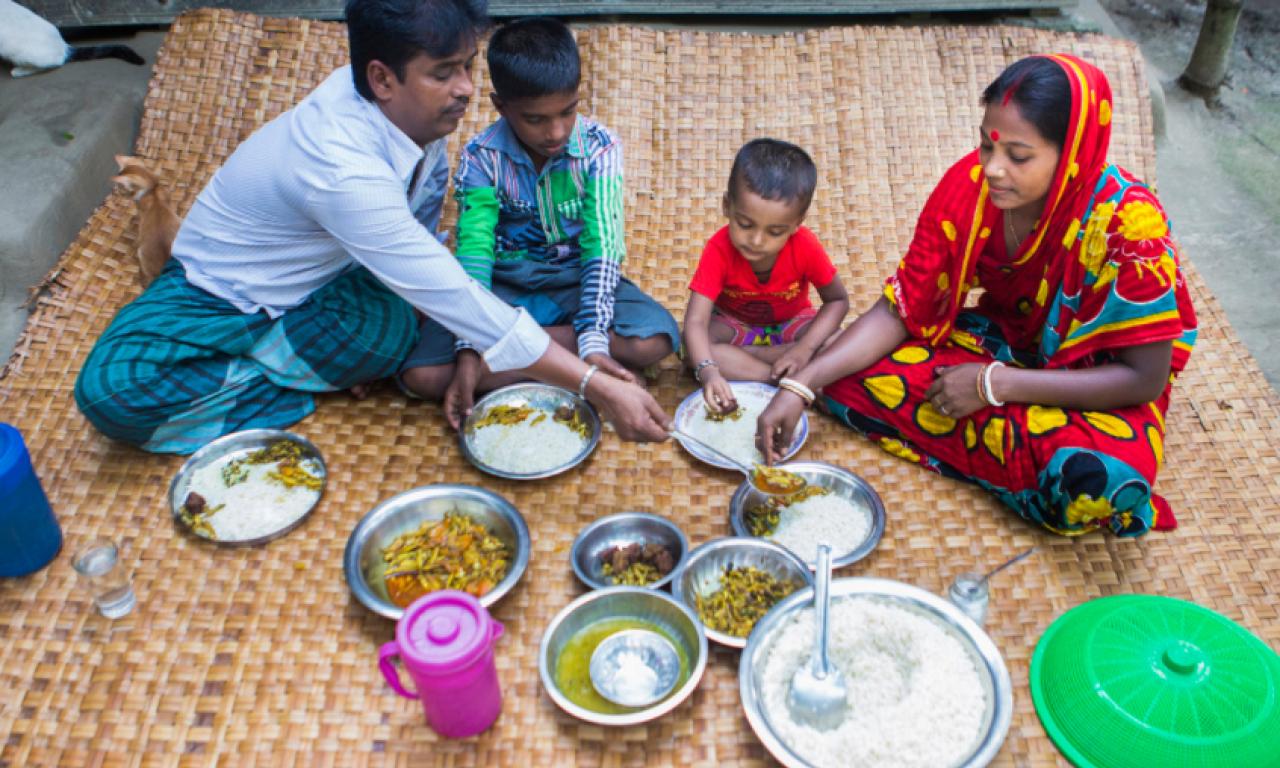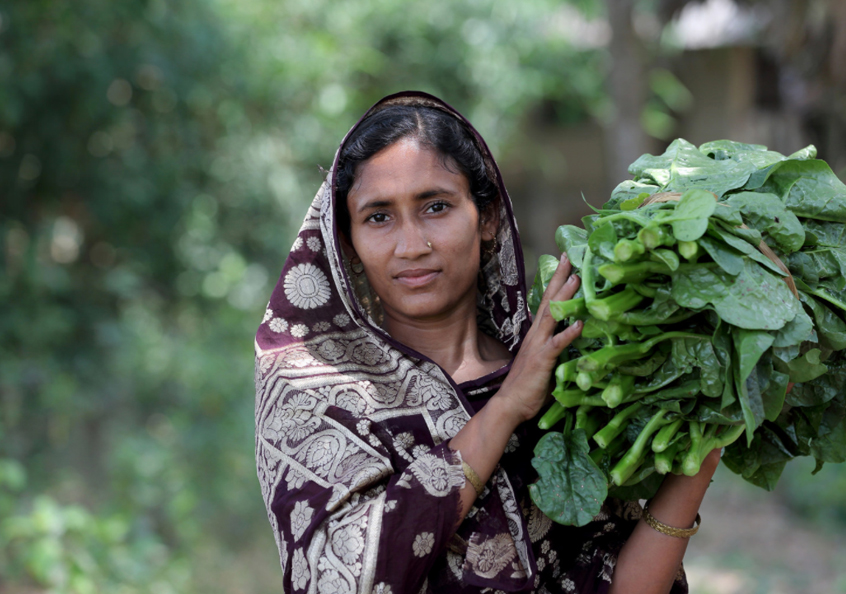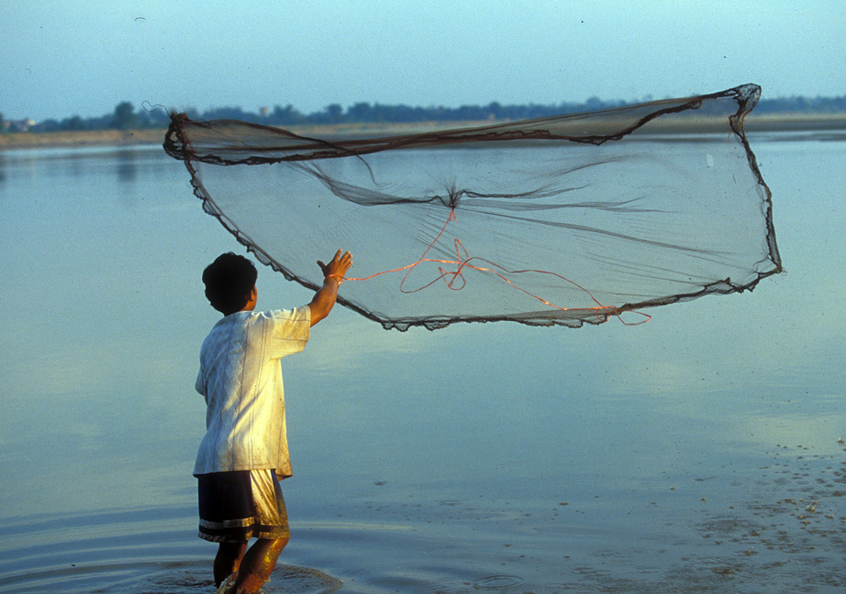
Today, efforts are needed to improve global food systems to boost human health and better protect the environment—and improvements in fisheries and aquaculture systems, particularly in developing countries, will be critical to this.
Recommended publications
- Rewiring food systems to enhance human health and biosphere stewardship
- Does aquaculture add resilience to the global food system?
Increases in global food production have outpaced population growth since the 1960s, enabling people to live longer and healthier lives. At the same time, this has led to higher rates of obesity and reduced the resilience of the world’s ecosystems.
Now, efforts are needed to improve global food systems to boost human health and better protect the environment—and improvements in fisheries and aquaculture systems, particularly in developing countries, will be critical to this.
Higher food production, but at what cost?
Over the last 50 years, the global population has doubled from around 3 billion people to more than 7 billion.
To feed this growing population, the world’s food systems have significantly increased their volume of production. Since 1961, production of cereal crops increased over 400 percent, cattle production increased by 230 percent and pig production increased 450 percent. Aquaculture production, in the meantime, has doubled the global supply of farmed fish for consumption since 1995.
This growth means more people now have sufficient food to eat. Between 1965 and 2005, the share of the world population living in countries with adequate food availability doubled from approximately one-third to two-thirds. And now, only three percent of the world's people consumes less than 2,000 kcal/day, instead of 50 percent in 1965. Significantly, this helped to almost halve global rates of undernutrition between 1990 and 2015.

In the meantime, over-nourishment has become a problem. In the 44 percent of countries that record nutrition data, rates of obesity have more than doubled since 1980. Today, diet-related diseases, particularly cardiovascular diseases and diabetes, account for 80 percent of deaths in low and middle-income countries.
A contributory factor to this increase in non-communicable diseases (NCDs) is that despite the greater availability of food, its nutritional content has not improved. So although many people can consume sufficient calories each day, the food they eat is not supplying enough nutrients for human health needs.
Another downside of increased food production has been its negative impacts on the world’s ecosystems. Changes in food systems have contributed to a loss of biodiversity, excessive biogeochemical flows and overuse of land systems—all of which are now beyond the earth’s ‘safe operating space’. Also, food production is estimated to be the origin of 25 percent of global greenhouse gas emissions.
Finding better ways to produce nutritious fish
It’s clear that food lies at the heart of both health and sustainability challenges.
Finding a solution to these difficulties will necessarily involve improving fish production, one of the largest animal producing sectors in the world. Fish is a valuable source of micronutrients, minerals, essential fatty acids and proteins, and aquaculture has the potential to produce more food with fewer resources and impact than other animal-source foods.
Harnessing these benefits will require a greater focus on small-scale fish production in developing countries, where the majority of the world’s fishers and fish farmers live, and where 75 percent of the world’s fish consumption occurs.

Here I present four of many strategies that can help boost the safety, volume and nutritional output of aquaculture and fisheries systems.
- Encourage production of nutrient-rich fish species. Today, aquaculture provides half of all fish consumed globally. While maintaining the high output of aquaculture is important, stronger efforts are needed to promote the production of nutrient-rich fish species. For example, the evaluation and selection of improved fish species should consider their nutritional content. In addition, promoting production diversity at different scales, such as at the district or sub district levels, can enhance local access to nutritious food.
- Reduce post-harvest fish losses. Every year, around one-third of total fish caught in developing countries is wasted, mostly due to poor processing, transport and marketing techniques. This causes less fish to be available for consumers and drives up fish prices, which most affects poor consumers, by limiting their access to fish. Tackling this waste, which WorldFish is doing by testing improved processing technologies and supporting traders and retailers to adopt better handling methods, is key to ensuring that nutritious and safe fish is accessible to poor consumers.
- Enhance the resilience of production systems. Improving the biodiversity of a production system, and diversifying the ways it is used, is crucial to building the resilience of the system itself and the biosphere. For example, WorldFish research in Bangladesh finds the addition of nutrient-rich small fish into existing carp ponds helps to make aquaculture systems more multifunctional and provides a source of income, as well as food. With small-scale fisheries, WorldFish experience finds that governance efforts are most effective when they consider the diverse needs of all users.
- Enhance transparency between producers and consumers. Fish is one of the most-traded food commodities worldwide, and has one of the most complicated supply chains, making it difficult for consumers to trace fish from ‘pond to plate’. Efforts to improve traceability are therefore much needed, particularly in developing countries, where more than half of fish exports by value originate. To this end, WorldFish has tested traceability systems in Bangladesh and Indonesia to understand how to scale up such systems in an effective and low-cost way. In addition, research to assess the lifecycle impacts of fish can help increase transparency. For instance, WorldFish research in Egypt found that use of the fast-growing Abbassa strain of Nile tilapia helped to reduce environmental impacts by up to 36 percent.
Today, the world is challenged to produce enough nutritious food to feed a rapidly-growing population, within a context of climate change, water and land scarcity, and ecosystem decline. This will require substantial changes to food systems—changes which research will be critical to providing guidance on.
Fish, both wild and farmed, will therefore become more central to healthy diets, as it provides a nutritious meal with relatively low environmental consequences.